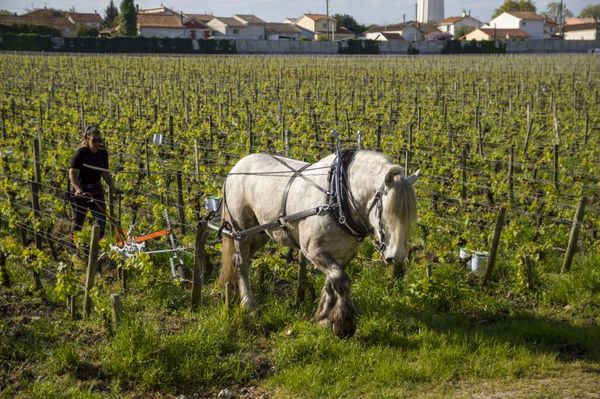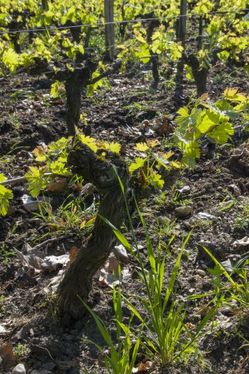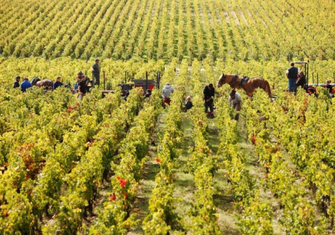Organic and biodynamic fine wine producers are delivering environmental solutions and enjoying the quality, social and financial benefits.
“Climate change is threatening vineyards. In order to survive and best manage the phenomenon, wine producers must act now with a conscientious and timely consideration of the future.” Giovanni Geddes, CEO of Super Tuscans, Ornellaia and Masseto.
The organic and biodynamic movement in wine production is growing ever stronger as these wines become increasingly sought after. Consumers are actively seeking organic and eco-responsibly produced wines. Europe is forcing the timing of the movement with agricultural regulations. The Common Agricultural Policy (C AP) has put incentives in place to reduce the massive environmental burden of the Agrifood sector.
How did the biodynamic wine movement start?
Ten years ago, winemakers were stating loud and clear “organic is the future for Bordeaux”. And where Bordeaux leads, the fine wine world follows. In fact, organic, biodynamic and sustainable farming in Bordeaux’s vineyards goes back to the early 1990s. The wider spread adoption of organic practices in vineyards has been taken much more seriously in the last decade.
Jean Michel Comme, former Technical Director at Chateau Pontet-Canet is a leading standard bearer for the biodynamic wine movement in Bordeaux. Over 31 years he shaped the winemaking culture that led the Chateau to being the first large scale estate to adopt organic and biodynamic practices. Pontet-Canet was the first of the 1855 Grand Cru Classé estates to become certified as biodynamic in 2010 and awarded double certification for the whole vineyard.
I had the privilege to meet Jean Michel at visits to Chateau Pontet-Canet on a few occasions and watched him captivate my team with his explanations of the philosophy of biodynamic wine growing. He retired in 2020 to focus on his own vineyard with his wife, and M Chapoutier’s Mathieu Bessonnet was appointed as his replacement with big boots to fill.
First Growth Chateau Latour was also an early adopter, introducing organic farming in the 1990s when they withdrew the use of chemical fertilisers. They brought horses into their vineyards, replacing machinery in 2008. Latour’s famed 47-hecarte walled, L’Enclos vineyard was entirely organic and 50% biodynamic for its 2015 vintage.

Most of the major estates in Bordeaux now produce wine organically, with many also adopting biodynamic techniques. In 2019, 271,000 acres (110,000 hectares) of Bordeaux was under vine managed by 5,700 growers, of which 65% had a certified environmental approach. The Conseil Interprofessionel du Vin de Bordeaux (CIVB) has set the target of 100% by 2030.
What is the difference between organic and biodynamic wine growing?
In organic cultivation, vineyard managers comply with a strict scientifically proven regulatory framework prohibiting the use of fertiliser, herbicide and chemical pesticides.
 Biodynamics is a holistic plan for creating a healthy and resistant vineyard fostering biodiversity, increasing soil fertility and microbial activity. The vineyard is looked at as a self-sustaining organism, and includes the use of animals such as sheep and donkeys. Interventions are minimalist with no synthetic products applied either in the ‘fields’ or in the cellars. The vine is encouraged to defend itself and the emphasis is on helping the plant rather than curing it.
Biodynamics is a holistic plan for creating a healthy and resistant vineyard fostering biodiversity, increasing soil fertility and microbial activity. The vineyard is looked at as a self-sustaining organism, and includes the use of animals such as sheep and donkeys. Interventions are minimalist with no synthetic products applied either in the ‘fields’ or in the cellars. The vine is encouraged to defend itself and the emphasis is on helping the plant rather than curing it.
A key differentiator between biodynamic and organic is the cosmic influences, and this is where Jean Michel Comme was a real leader in the field. Attention is given to the lunar calendar and the position of the sun and the moon in relation to the vines and treatments such as pruning and the timing of the 'homeopathic' natural treatments made from plants such as nettle and burdock.
Biodynamic viticulture deals with the environmental challenge of regenerating the soil, preserving the natural environment, protecting humans and delivering quality. Winemakers state that it is proven to reinforce the expression of the terroir, the sense of place through wine.
What are the Organic and Biodynamic certifications?
Certification is recorded as AB for Organic and Demeter or Biodyvin for Biodynamic practice. Haute Valeur Environmentale (HVE) is not fully sustainable or organic but seen to be an advance towards more responsible and accountable viticulture. At the end of 2020, 1500 Bordeaux properties were HVE certified.
Certification requires investment by the owners, but it is also the key to engaging an increasingly knowledgeable and demanding consumer. Today’s challenges in regards to climate change, managing higher alcohol content and the increasing demand for more respectful, sustainable viticulture need to be met.
How is the industry driving change?
Appellations are introducing their own initiatives to drive change. For example, St Emilion growers recently voted to make an environmental certificate a mandatory requirement for the appellation from 2023 and is the first syndicate to do so in France. We witnessed impressive projects at Chateau La Mission Haut Brion and Cheval Blanc at our recent visits.
Margaux has put biodiversity centre stage with its project Margaux Terroir de Biodiversite. Chateau Palmer has been experimenting with biodynamics since its 2008 harvest. Over time they have seen their biodynamic managed plots were producing higher quality grapes. The 163-acre vineyard was officially converted to organic and biodynamic cultivation in 2013 and certification was achieved in 2018.
Chateaux Haut-Bages Liberal, Gruaud Larose and Montrose have all committed to organic and biodynamic cultivation. Chateau Lafite Rothschild started trials in 2016 and aims to be certified by 2024.
Champagne’s Challenge
Champagne has found that the warming climate has produced outstanding vintages in recent years, but that won’t last forever and the region's growers need to face the challenge of managing quality and climate change.
Significantly, the region has had the highest dependency on herbicides and pesticides in France, and possibly the world.
That said the CIVC aims to have the whole region certified to Viticulture Durable a Champagne (VDC) by 2030. As it happens this will be a national requirement by then anyway and all of the big houses are VDC certified.
LVMH understands that sustainability is driven by consumers, and they are investing heavily. Their Taissy project in the Ruinart Vineyards aims to reduce the impact of viticulture on the enviornment through reintroducing native vegetation and reforestation of nearly 14,000 trees and 4.4km of hedges.
The owner of Krug, Dom Perignon and Moet & Chandon also introduced the use of sheep in the Moet vineyards to naturally manage weeds. This initiative made the headlines when their 14 sheep were stolen along with the solar panel fuelling their electric boundary!
LVMH invested €20million in a Champagne based research centre focused on sustainable viticulture in 2021 and has established the University of Living Soils which hosted its first World Living Soils forum in 2022.
Our view on organic and biodynamic influences on wine investment
We should all do everything we can to support any changes to help our environment, to address the challenges of climate change and sustainability. That naturally leads to investment as it does in other sectors. Those vineyards that are leading the way, investing in innovative technologies and working practices to help them, their neighbours and partners to adopt the same necessary measures, should be supported. That means we should buy their wine!
For more information on biodynamic and organic investment wines speak to a member of our expert team on 0203 384 2262. See our Guide to investing in fine wine to learn more about the wine investment market and how to get involved.

